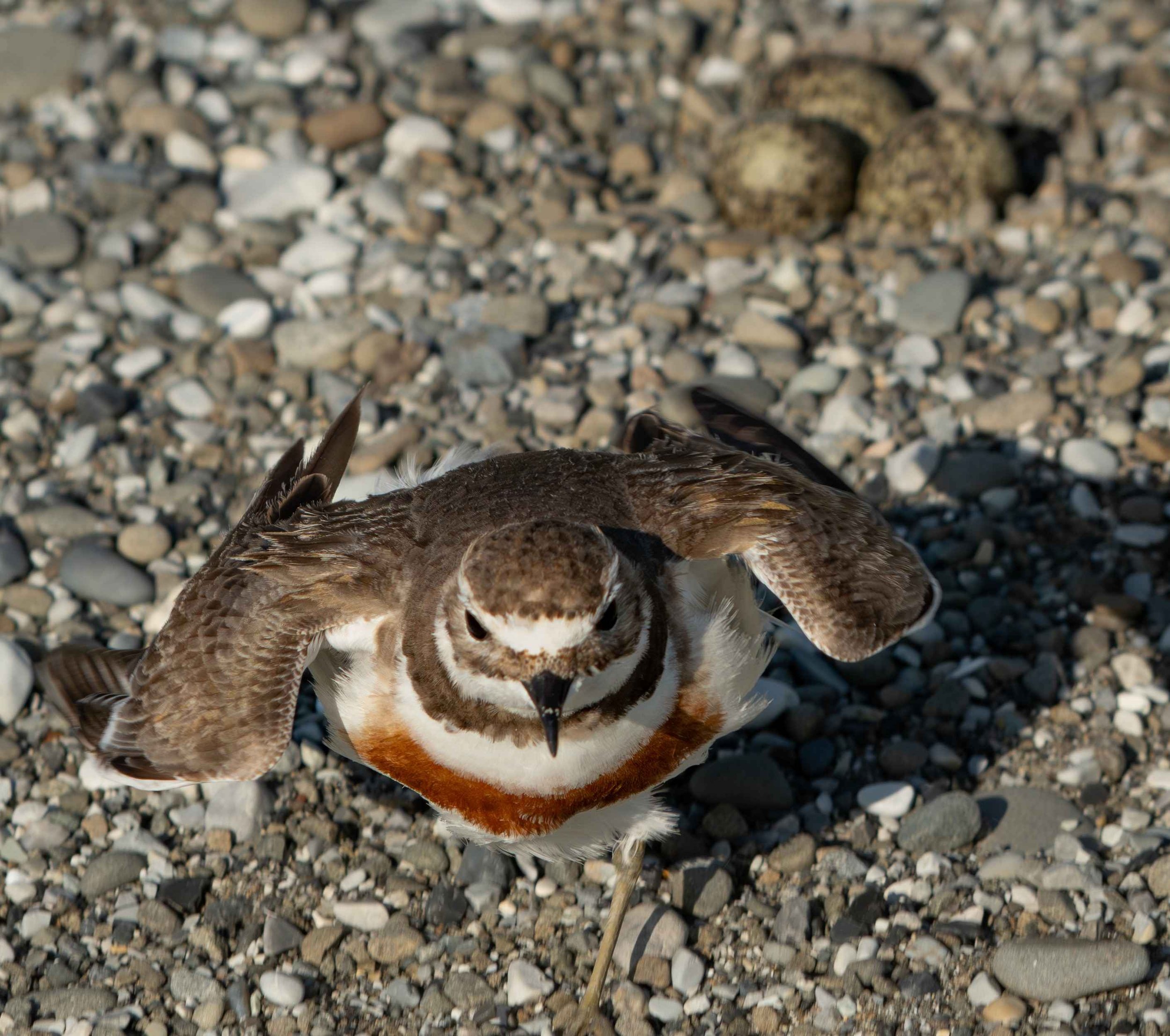DOTTEREL - BANDED
Learning Curve
Years ago I had some time off work. December is a greeat time for wildlife photographers - babies are being made, prepared for and borne.
So where do you go when you are based in Christchurch and want to photograph the wonders of nature? You can go south to see Yellow Eyed Penguins or Royal Albatross, or noth to Kaikoura to shoot surfers, baby seals and a big ol’ variety of shore and sea birds.
Off to Kaikoura!
Now coffee is great when you’re on the road. Calling into a tourist coffee stop I decided to go for a walk along the beach. I’d heard a bit of controversy about this paticular beach, having a camping area right next to a breeding ground for some rare bird. Well darn me if I didn’t almost walk right onto a nest in the pebbles, containing 3 speckled eggs. I’d just found myself the nest of a Banded Dotterel.
Pretty ignorant of stuff back then, I noticed the little bird a bit bigger than a Sparrow, hanging around me acting funny. I got some great shots of the nest and this cute little guy, putting his wing up, acting injured, trying to lead me away from his nest.
For the next 3 days I was on nest stake out, snapping off hundreds of images as the lone parent stressed about me. He had good reason to be stressing. On the second day I arrived in the morning to find an egg hatched with a dead chick lying next to the nest. It was gone by the afternoon - most likely taken by the Dominican Gulls hovering nearby. On the third day I went to get coffee. Arriving back after about 10 minutes, I found another egg halfway hatched and witnessed the birth of a Banded Dotterel chick.
What an amazing experience. I felt like watching National Geographic.
Unfortunately that was all the time I could spare - back to work for me. I didn’t see the last chick hatch and often wonder if the babies survived, especially with only one parent - who watches them while Dad’s away getting dinner? Something must have happened to the mother, as Dotterels are never far away from their mates for long. There was the constant presence of Dominican Gulls, waiting for their chance at an easy meal. These are the Dotterels biggest enemies alongside cats, dogs and stoats - and of course people.
Consider This
What you see here is the equivalent of you or I protecting our home by waving our arms whilst charging a 40 meter high giant
Here you can see the frightened father sitting low on his nest, oblivious of my good intentions. Behind him, mostly obscured by the larger stone, lies the body of the dead chick.
Despite my ignorance
In the back of my mind I knew there was something wrong with what I was doing here, harassing the little guy, making his already difficult time even worse.
looking back years later, I know just how wrong my conduct was.
So I remember Jeremy when I’m tempted to annoy nature.
I consider the knowledge I’ve gained and the people I’ve learnt from. I put my faith in patience, perseverance and practice (and Nikons’ awesome glass), to capture the images you see here.
Everybody should know why taking care and showing respect for our feathered friends is so important.
ESPECIALLY WILDLIFE PHOTOGRAPHERS
Dotterel nests are usually nothing more than a depression in sand or pebbles. They like open ground with 360 degrees of view and rely heavily on camoflage for their survival.
You can see the chicks’ beak punching through the front egg. I saw it break through and watched for about 4 hours before sundown. The photo to the left is what I saw the next morning. Maybe the little guy just had too tough a time hatching and died from exhaustion / dehydration. With blazing sun, blowing a gale and no real shelter, the odds were really stacked against.
This is my only remaining photo of Jeremy (my name for the little tike), thanks to the prick who burgled me and took my hard drives and back ups.
Good luck Jeremy, I hope you (and your little sister) made it and are each having little Jeremy’s of your own.













